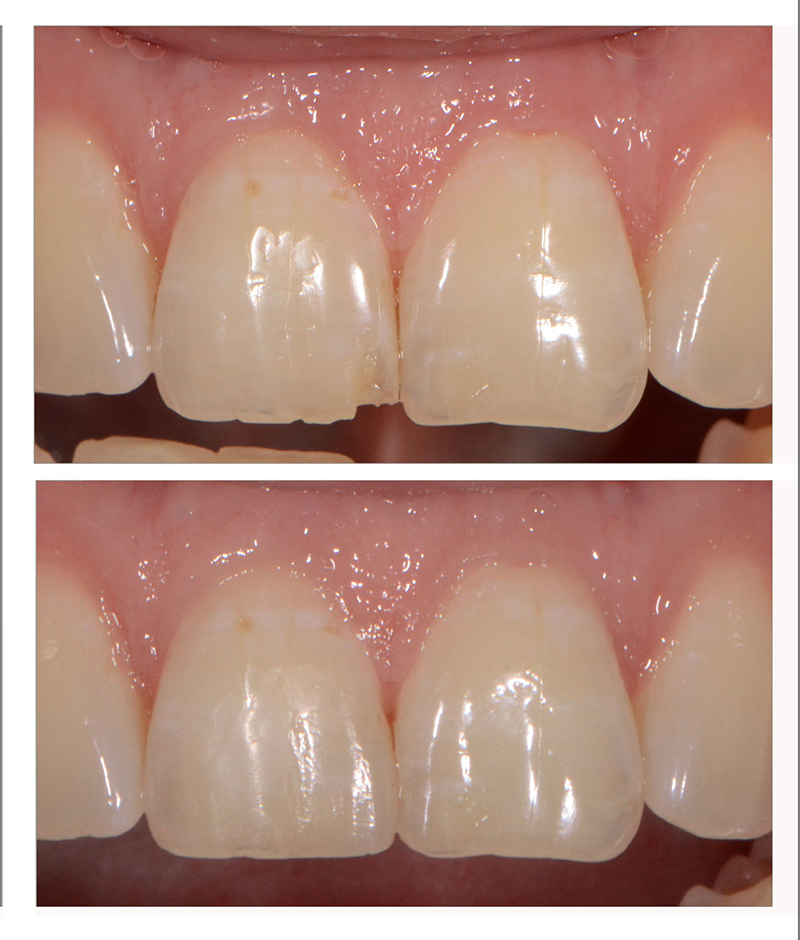Basics of Layering Composites in the Esthetic Zone
By Dawn Wehking on February 26, 2020 |Most dentists are not layering composites because they weren’t trained to do so. Learning a new system amid day-to-day practice management can seem overwhelming.
Maybe you’ve tried to layer a few anterior composites and you can’t figure out what went wrong. You’ve seen all those fancy composites on Instagram and you’re dying to know how they do it.

In traditional posterior composites, we use one shade/translucency because it doesn’t have to look completely natural. If you use one shade in anterior restorations, you’ll see that line between the tooth and composite. It’s time to eliminate that line by layering composites correctly.
In order to improve your anterior composites, you need to first understand the basics of tooth anatomy so that you comprehend what we’re trying to recreate.
COMPOSITES E-BOOK: Our new e-book includes articles and visuals to improve everyday restoration workflows with strategies developed by top dental clinicians like Drs. Frank Spear, Gary DeWood and Greggory Kinzer.
At the risk of really oversimplifying things, let’s review the basics of tooth anatomy:
Natural teeth
Natural teeth have dentin and enamel. Dentin is more opaque than enamel and holds most of the color (chroma). Enamel is more translucent and provides the cool opalescent effect. Light passes through the translucent enamel and reflects the color of the dentin. For most anterior composites, that’s all you need to know.

The properties of natural teeth change with age and wear. Young teeth tend to be brighter and have more enamel, with more translucency at the incisal edge. As the incisal edges of teeth wear with age, the enamel wears off and the dentin comes closer to the edge of the tooth. Older patients will have thinner enamel, which means the dentin layer is closer to the surface of the tooth and will be more chromatic/darker.
Esthetic composite
Esthetic composite comes in different translucencies, opacities and color modifiers (tints) so we can recreate the properties of natural teeth. They make it this way so once you understand tooth anatomy you can replace what is missing.
Just like in nature, dentin composite is more opaque and chromatic. Enamel composite is more translucent, which allows the chroma of the dentin to show through. We use the variations of opacities, translucencies and color modifiers to enhance a desired effect like white spots, halos and craze lines. We can also use these composites to mask discolored areas, amalgam stains and implant abutments.

Putting it all together
A natural looking restoration is much more about matching value than hue. In other words, controlling the amount of light that passes through (or doesn’t pass through) the material.
If you’ve been layering different hues (A2/A3) but haven’t been focused on the value of your materials, you’ve probably discovered your restorations still don’t look right. Understanding how natural teeth wear will help you learn how to layer your composite. In an older tooth, the enamel layer should be thinner than a younger tooth. Layering the composite in this way helps to control the value of the restoration, independent of the hue you chose.
Always remember that dentin is more opaque than enamel. If you want to mask the junction between composite and natural tooth, you must make sure the fake opaque dentin blends over the natural opaque dentin.
To summarize, here are the important things you need to know about layering esthetic composites:
- Enamel is translucent and provides a natural looking luster/opalescence
- Dentin is about 20% more opaque than enamel
- “Effect” composites accentuate the translucency and opaqueness of enamel and dentin layers
- Opaquers help block out ugly stuff (stains, posts and pins)
- The hues (A1, A3, etc.) are least important
If you want to be a top-tier dentist, then having a transition line in your anterior composites is, frankly, unacceptable. Now that you understand the basics, it’s time to give it a try. You can also read about the “Dentin Samich Technique” for a simple way to create a natural-looking restoration.
Dawn Wehking, D.D.S., M.A.G.D., is a member of Spear Visiting Faculty and a contributor to Spear Digest.
Advance Your Practice Toward Great Dentistry
Strengthen your referral relationships, sharpen your clinical skills and connect to a network of like-minded dentists with Spear.
Whether you join us on campus, online or in your own community, you can add value to your practice while learning from the world’s top clinicians and dental educators.
LEARN MORE